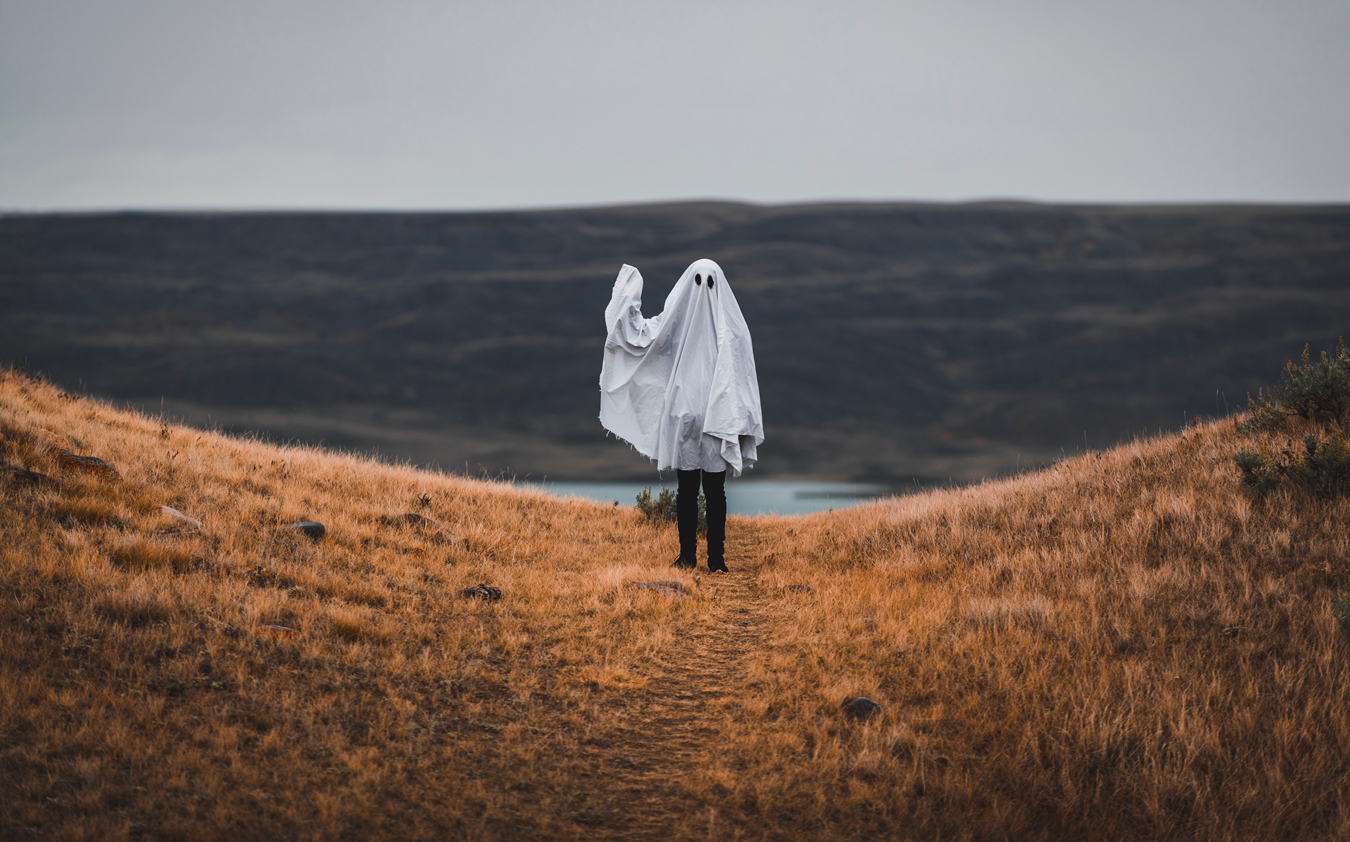
Boo & Ghostworthy: A Collection of the Country’s Spookiest Haunts
In the spirit of Halloween, we went coast to coast in search of the most haunted, eerie, or otherwise spooky places across Corcoran’s markets.
As the calendar flips to October, a new season comes along with it. No, not autumn, but the much-ballyhooed “Spooky Season” — a time to drink pumpkin spice whatevers, eat too much candy, and watch scary movie franchises whose quality varies wildly from film to film.
Of course, you can enjoy those types of things any time of the year if you really want to. Halloween isn’t necessarily a prerequisite to staying up past midnight to watch Halloween 6: The Curse of Michael Myers, again. In that spirit, let’s explore locations across the country that keep things a little bit creepy, mysterious, and weird every day, and especially every night.

Morris-Jumel Mansion
Washington Heights, NY
Built c.1765 by British military officer Roger Morris and still standing today as the oldest house in Manhattan, the Morris-Jumel Mansion has seen a lot — even by conservative estimates. Both sides used it as a headquarters during the Revolutionary War, including General George Washington following the Battle of Brooklyn through the Battle of Harlem Heights. Much later on, as the surrounding area blossomed during the Harlem Renaissance, the mansion remained and was called “the jewel in the crown of Sugar Hill” by jazz god Duke Ellington.
In between, it was home to Aaron Burr — one of our most infamous duel winners — who was briefly married to its owner, Eliza Jumel. One of New York’s wealthiest women at the time, Jumel took great care in maintaining the mansion’s Federal-style glory. Seemingly, she was so attached to and invested in the place that she continues to haunt it — warding off rapscallions, yelling at noisy school children, and puzzling pestering paranormal professionals some 150-plus years after her passing. And it’s not just her: Everything from unexplained footsteps to suddenly flowing faucets has been attributed to Hessian soldiers, servants, and even Washington and Burr. The Morris-Jumel Mansion: Come for the history, stay for the getting spooked by our foremost Founding Father stubbing his toe on a settee or something.
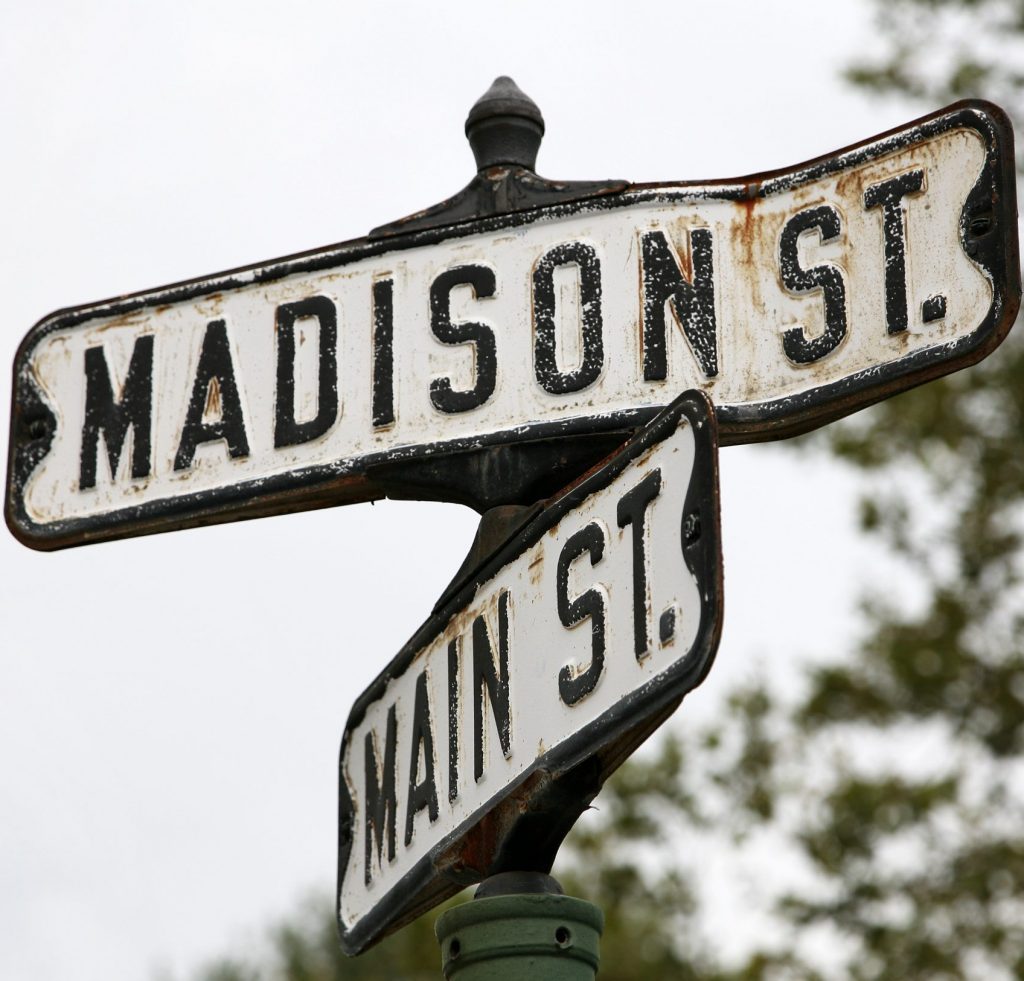 Downtown Sag Harbor
Downtown Sag Harbor
Sag Harbor, NY
As the village once served as the official point of entry into — plus the unofficial whaling capital of — the nascent United States, Sag Harbor has unquestionably been exposed to its share of characters. It is not a stretch to imagine those now-historic cottages populated by Captain Ahab-types resting up and plotting against Moby Dick-types. Therefore, it only makes sense that some of those seafarers of yore continue to hang around these coastal downtown streets.
Ghost stories date as far back as 1895 when the New York Times itself devoted a front-page blurb to a tall ghostly menace. Wearing a “high hat” and carrying an army musket over its shoulder, this spirit allegedly jumped out of bushes to frighten locals on their way home. Only one Tom Sellors was brave enough to put up their dukes, whereas others vainly emptied their revolvers in a panic or turned tail and ran. Apparently more a trickster than a fighter, the visitor from beyond promptly dematerialized as Sellors displayed his fists. Or so the story goes.
While the ultimate fate of that towering shade is unknown, it does not mark the end of Sag Harbor’s dalliances with the afterlife. For example, two c.18th-century downtown houses — currently outposts for froyo and beer, respectively — have reported being site to various hauntings and general spooking. Guess there’s just something about shingle-style buildings by the water that the spirits can’t resist.
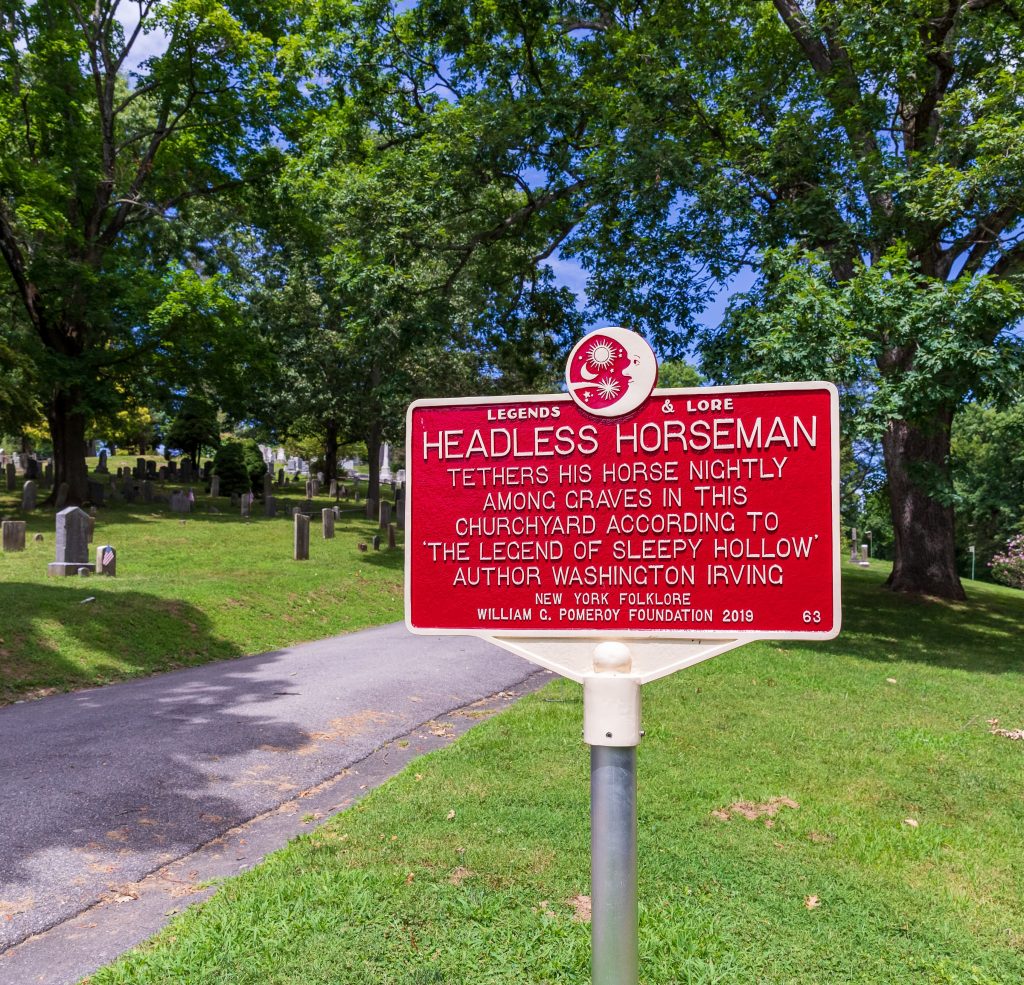
Photo: Shutterstock/hw22
Sleepy Hollow
Sleepy Hollow, NY
Sometimes, the classics are classics for a reason. Washington Irving published his short story “The Legend of Sleepy Hollow” in 1820. Society has been obsessed with Ichabod Crane and the Headless Horseman ever since. We’re talking about celebrated paintings and official U.S. postage levels of obsession; dramatic readings recorded by the likes of Bing Crosby, Boris Karloff, and Glenn Close; numerous adaptations for the screen, including a take starring none other than the Smurfs. Seems like everyone has been as inspired by Irving’s work as the famed writer was by the actual riverside village of Sleepy Hollow.
Sleepy Hollow is charming on its own merits, regardless of whether or not a shadowy, pumpkin-wielding figure stalks the evening fog. A combination of history and a Hudson River setting makes it feel like a story not necessarily featuring ghosts come to life. The village also fully embraces its status as a hotbed for spookiness. October brings haunted hayrides, seasonally appropriate tours of Sleepy Hollow cemetery — the final resting spot of Andrew Carnegie and, who else, Washington Irving — Halloween-themed fun runs, and more to the proud community. And speaking of embracing things, Sleepy Hollow only officially became Sleepy Hollow in 1996 after it changed its name from North Tarrytown. Did we mention people adore Irving’s story?
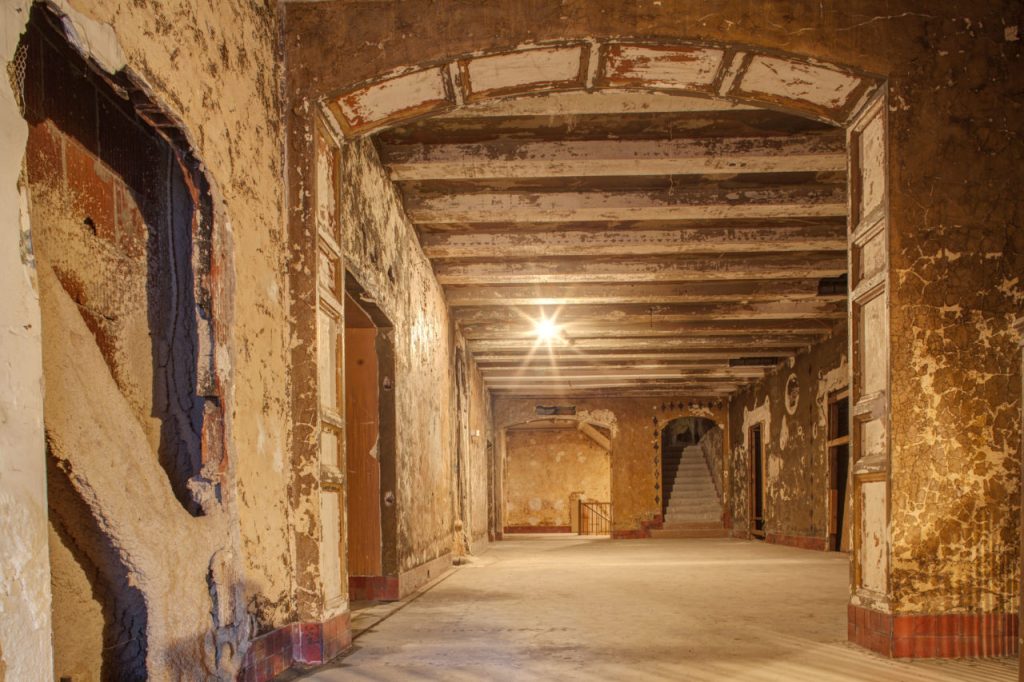
Photo: Carolina Theatre/Sean Busher Imagery
Carolina Theatre
Charlotte, NC
He’s no “Phantom of the Opera,” but the mononymous Fred is the most prominent and revered specter in the annals of Uptown Charlotte’s Carolina Theatre. Per legend, Fred was an affable former fellow, donning a white Oxford shirt and causing little harm beyond moving precisely positioned props or causing lights to malfunction. Plus, a crewmember only needed to tell him to “knock it off” for things to return to normal. Everyone loves a friendly ghost, and seemingly none could read a room and tell when a prank had run its course better than Fred.
During its peak years, the Carolina Theatre brought in all the entertainment the city could want, even Elvis Presley. When The Sound of Music arrived in 1965, it played on for 79 straight weeks, drawing more viewers through the theatre’s doors than people who lived in Charlotte at the time. Sadly, the Carolina Theatre closed in 1978 and has since had many of its decorative elements removed, damaged, or outright demolished. Renovation efforts are well underway, however, and while the new Carolina Theatre will primarily operate as a civic hub for lectures, symposiums, and panels, it will also once again host film screenings and performances. Plans call for restoring the theatre’s c.1927 murals, original facade and marquee, and ornamental interior details. An opening is anticipated in 2023, presumably when Fred will also make a grand re-debut.
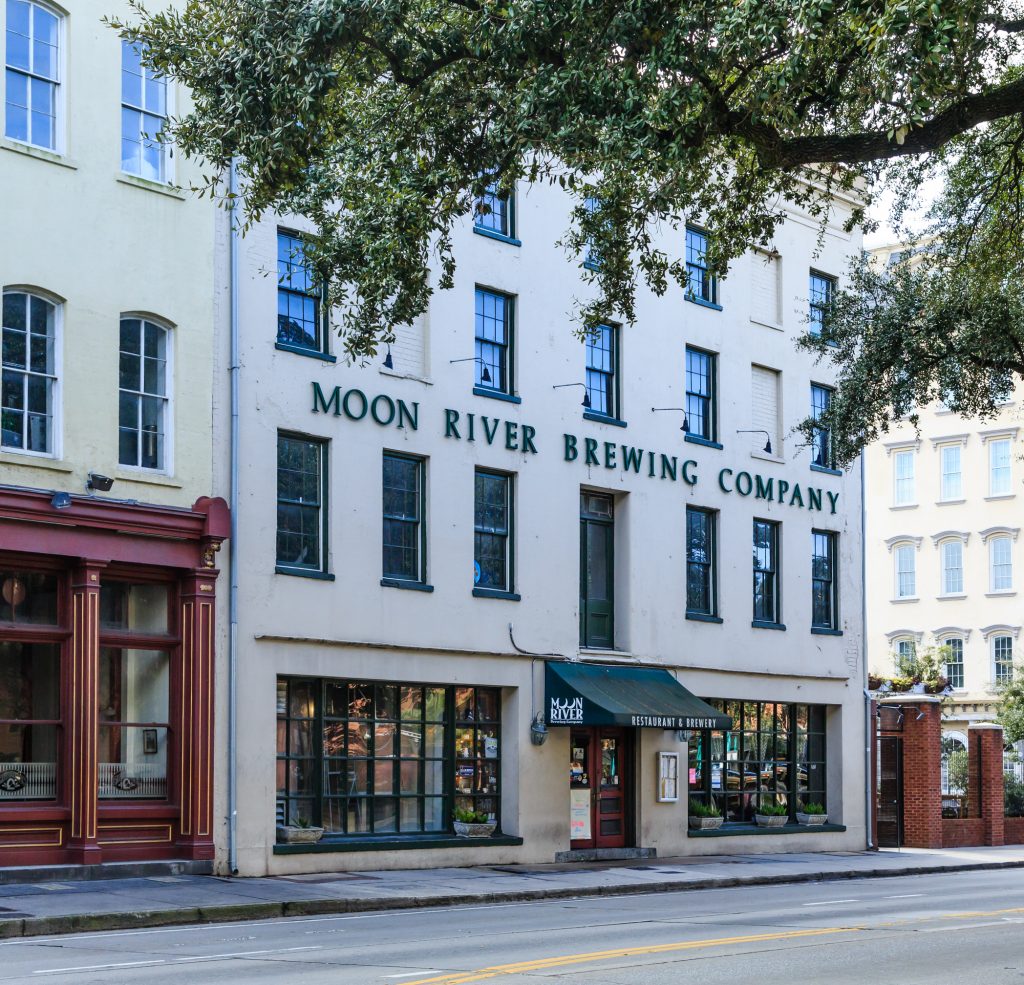
Photo: Shutterstock/Darryl Brooks
Moon River Brewing Company
Savannah, GA
Don’t you absolutely hate it when you’re about to take that first sip of Swamp Fox American IPA just for an invisible force to smack it out of your hand? Only in a city old as Savannah could you find spirits in a craft brewery. Savannah has been around since 1733 and carries clout among the country’s most haunted places. Between creepy graveyard statues and houses in need of exorcism alone, paranormal investigation TV shows can’t swoop into Georgia’s first city fast enough.
One of Savannah’s most venerable haunts, where a miffed server is currently sweeping up a broken pint glass, is Moon River Brewing Company on West Bay Street. But how exactly did a brewery, of all places, get so ghostly? The building was completed in 1821, with its previous lives including a Civil War-era hospital and an office supply store — no word about dead computers haunting the place. But first, it was the City Hotel, an establishment that counted politicians among its notoriously raucous patrons. Infamously, a locally-despised man named James Stark was shot in the hotel bar and remains rowdy as ever in death as the suspected specter culprit behind numerous unexplained shovings. Modern visitors also report spotting a woman in 1800s-period clothing walking through the bar and vanishing. Regardless of whether these encounters are genuine or if Moon River simply brews very drinkable beers, it all adds to the singular experience that is Savannah.
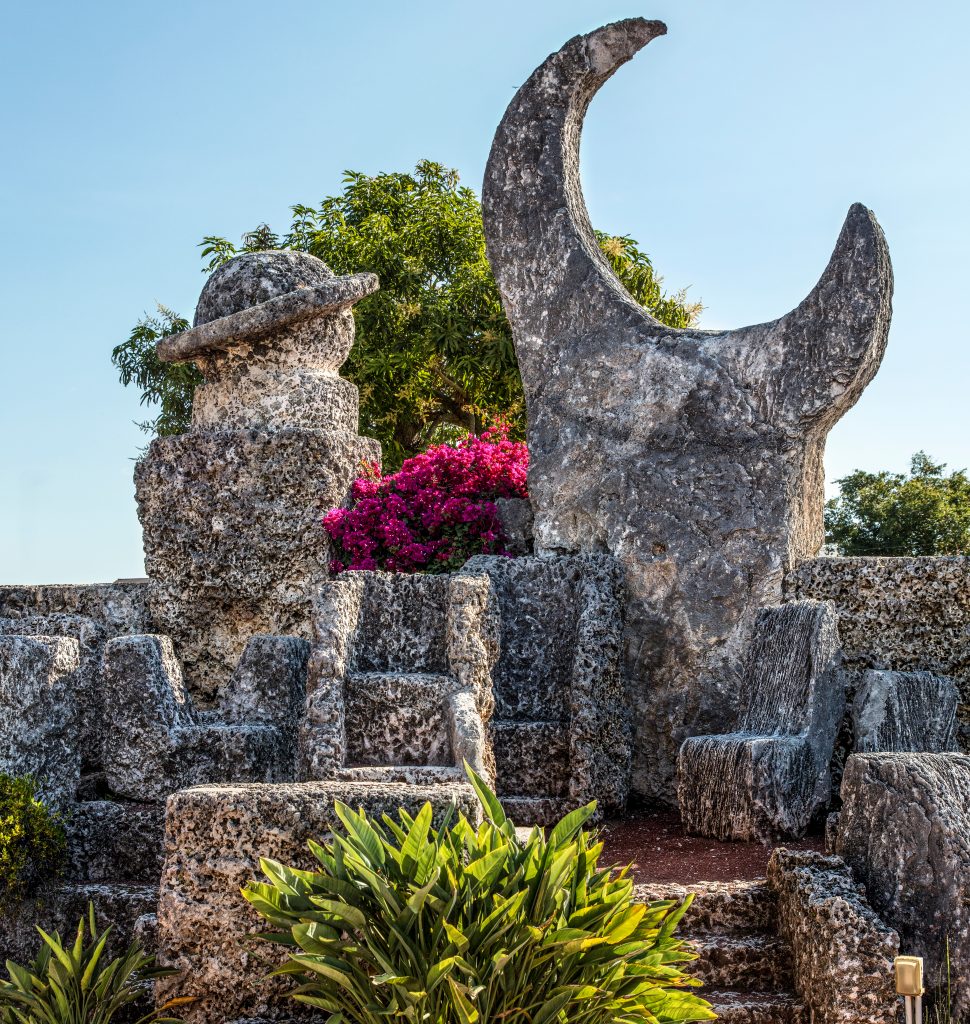
Coral Castle
Homestead, FL
In 1951, after 28 years of work, Edward Leedskalnin cut his last piece of stone and completed his masterpiece, the so-called Coral Castle in Homestead, Florida. Left at the altar and having twice beaten tuberculosis, this five-foot-nothing, 100-pound man came to South Florida with one goal in mind. He would single-handedly construct an elaborate sculpture garden in honor of his erstwhile lover, even though her stance on them as a couple had been made abundantly clear. Undaunted, he hand-carved innumerable oolite limestone into various shapes and recognizable objects like rocking chairs and telescopes.
So, you’ve got the who, what, where, why, and when — the only question left is how? See, the weight of all the oolite limestone in Coral Castle is upwards of 1,000 tons, and Edward Leedskalnin did not exactly profile as a powerlifter. How indeed did he carve and transport all that rock by himself? For nearly three decades, Leedskalnin conducted his work out of sight, under cover of darkness, leading many theories to arise from supernatural abilities to alien intervention to hyper-powerful magnets to Leedskalnin himself being an alien. Six decades post-completion, the structure still stands, and Floridians remain baffled by what sounds like the premise of an especially quirky X-Files episode. As the sign out front reads: “You will be seeing unusual accomplishment.” Yes, that sign is carved from oolite too.
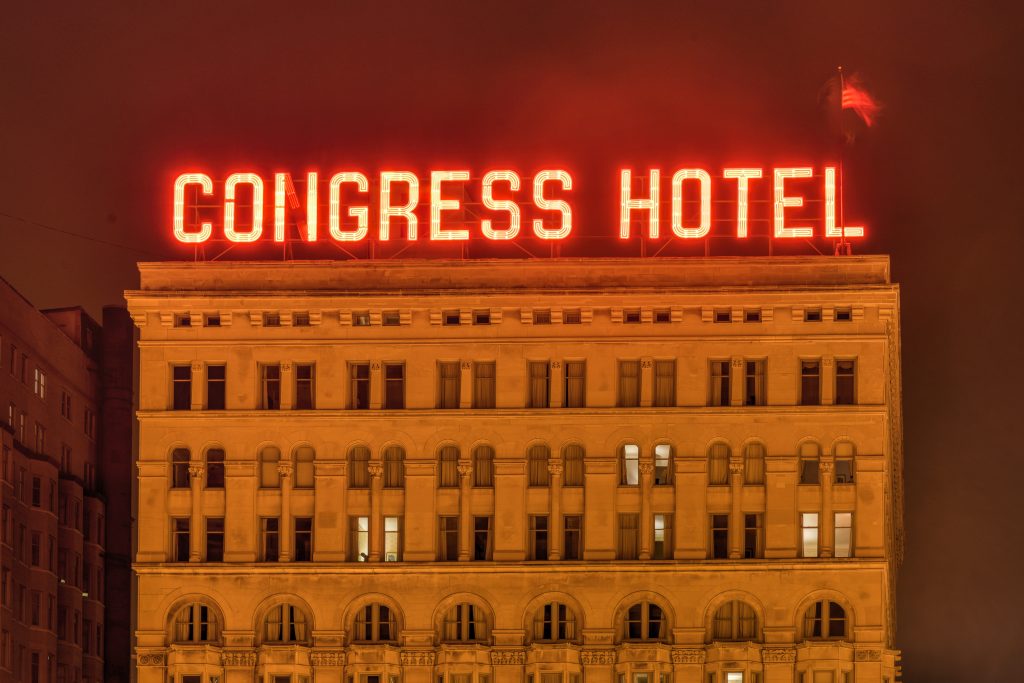
Congress Plaza Hotel
Chicago, IL
Obviously, the idea of a haunted hotel is nothing new; we’ve all read The Shining, seen The Shining (1980 film), or seen The Shining (1997 TV mini-series). But, the Congress Plaza Hotel — abutting Grant Park in Chicago’s South Loop — may be the standard-bearer for that hyper-specific subgroup of establishments.
Opened c.1893 as an overflow location for that year’s World’s Fair, the Congress Plaza has far surpassed its original purpose, making various degrees of history along the way. It has hosted several presidents, served as a hub for the city’s high society, and claimed the first ballroom in the country outfitted with air conditioning. All told, the building has left a substantial mark on Chicago’s storied past.
Today, the Congress Plaza Hotel still hosts guests. However, whether or not those guests are currently checked into a room is another story. Spirits are practically climbing over each other on the ethereal plane to manifest here. Al Capone frequented the Congress Plaza in his heyday and still shows up, especially around his old suite on the eighth floor. Room 441 is notorious for its visitors being kicked awake by a shadowy woman figure. And who could forget Peg Leg Johnny, the purported hobo ghost known to mess with light switches and appliances? Each contributes to the rich lore of what some consider the single-most haunted place in all of Illinois.

Photo: Denver International Airport
Denver International Airport
Denver, CO
From the moment Denver International Airport (DEN) opened in 1995, Coloradoans have conjectured wildly about it. Some see DEN’s pricey and oft-delayed construction as indisputable evidence of broad Freemason, Illuminati, or New World Order involvement. There are also rumors of miles-long underground tunnels that either connect to NORAD headquarters in Colorado Springs, house a cabal of lizard people, or conceal undisclosed bunkers for any of the aforementioned secret societies. DEN’s artwork also raises eyebrows, with murals reputedly containing apocalypse-predicting imagery. However, the airport piece literally looming largest is a cast-fiberglass sculpture of a blue horse.
“Blue Mustang” makes one hell of a first or final impression of Denver, standing 32 feet tall and weighing in at 9000 pounds with incredibly defined muscles and veins. But the blue behemoth, better known as “Blucifer,” is made all the more frightening for its glowing set of demonically red eyes that pierce through the Denver night. Not to mention, the horse is quite literally a killer: In a tragic accident, part of the sculpture fell onto its artist Luis Jiménez, directly causing his death. Jiménez intended “Blue Mustang” to represent the West’s wild spirit — given the thing’s rugged appearance, it certainly does. But if there wasn’t something supremely sinister about that blue horse, why does DEN’s baggage claim boast two gargoyles, architectural grotesques classically thought to ward off evil?
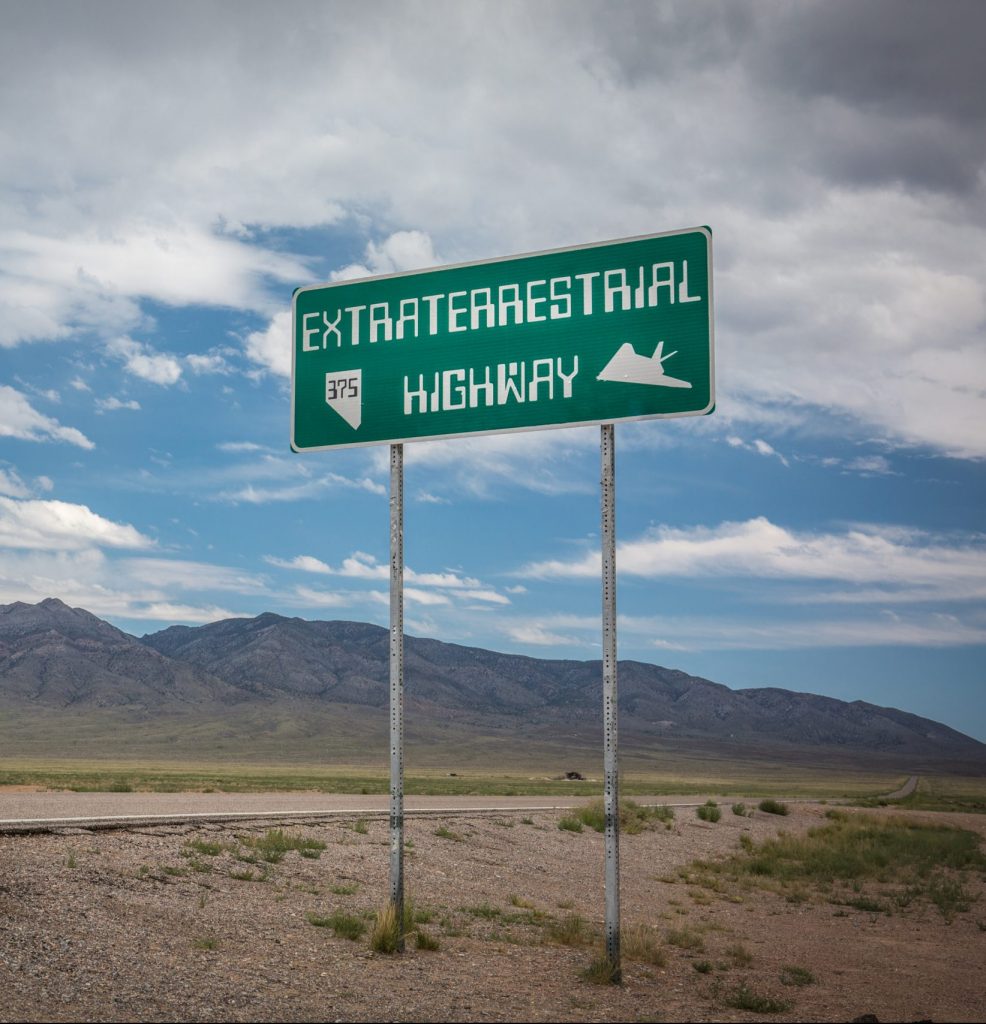 Extraterrestrial Highway
Extraterrestrial Highway
Outside Las Vegas, NV
Beyond the neon glow of Las Vegas, the landscape of south-central Nevada is a sprawling expanse. Sitting in the open, beneath an endless sky, one can’t help but wonder if we are alone in the universe. That’s where the Extraterrestrial Highway — Nevada State Route 375, officially — comes in. You may or may not meet any alien lifeforms along its northwest path, but traveling over 100 miles through the desert outside Vegas, you could say the same for human lifeforms.
The highway commences near — fittingly for this piece — the ghost town of Crystal Springs, eventually snaking past Area 51. However, while you won’t gain access into the world’s least-secret secret base, Area 51 does sit near a locale that actively encourages visitors: Rachel, the “UFO Capital of the World.” Rachel’s Little A’Le’Inn restaurant/bar/inn is the roadside attraction to end them all, providing alien-themed sustenance and wares, plus opportunities to catch stories of strange encounters. If sticking around to get abducted isn’t your thing, continue on to Tonopah, the ET Highway’s northern terminus. Plenty of non-alien-related spooky stuff dots this old silver town — e.g., The Clown Motel — but the most stunning attraction in Tonopah is above Tonopah. Look up during a clear, moonless night, and you’ll spot thousands of stars and the Milky Way itself. Honestly, you can see so much that who knows what you actually might see up there.

Hollywood Forever Cemetery
Los Angeles, CA
Sure it’s a graveyard, but no ultimate resting place boasts a clientele quite like the Hollywood Forever Cemetery. Founded in 1899, it is the final home of icons (Judy Garland), legends (Mel Blanc), and folks who helped shape present-day Los Angeles (Griffith J. Griffith). And more: Despite the sort of grandeur that comes with some of its eternal tenants, Hollywood Forever is a fully functioning funeral home and crematory and a space for social happenings — the cemetery has hosted film screenings, live concerts, and the purported largest Día de los Muertos celebration outside of Mexico. It’s also adjacent to the Paramount Pictures lot, with which it allegedly shares some wandering spirits. That or some extras got lost on their way to a period piece set, confusing onlookers. Hard to say.
The grounds of Hollywood Forever are expertly landscaped, possessing a vast variety of trees and shrubs. There are some flourishes as well, such as a mausoleum surrounded by a moat. And while it seems tough to upstage such a thing, Johnny Ramone does exactly that. Standing waterside, the punk rock luminary’s gravemarker features a statue of the man himself in all his glory: shaggy-haired, wearing a leather jacket, hitting a downstroke on his Mosrite six-string. Even in death, nothing is too ostentatious for this town.




